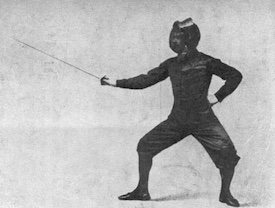jcx
Headphoneus Supremus
- Joined
- Jul 24, 2002
- Posts
- 2,371
- Likes
- 372
I listened only to Sample 2, normal and then inverted. They sound the same to me. I listened on decent quality Sony headphones.
Usually a difference can be heard after inverting polarity only with low frequency content. And as I explained earlier, it's due to non-linearity in the speaker or headphone drivers, not the ear's ability to distinguish polarity.
--Ethan
ethan - please make the clarification of what can be heard in careful tests designed to point up the differences and what is perhaps a "practical" decision to ignore polarity in normal music mastering
polarity as I point out below (previously in this thread) can equivalent to substantial harmonic vs fundamental phase shift for asymmetric waveforms
and the audibility has been tested by recognized researchers, published in Audio Engineering Society Journal
http://www.aes.org/e-lib/browse.cfm?elib=3824
~~ On the Audibility of Midrange Phase Distortion in Audio Systems~~
The current state of our knowledge regarding the audible consequences of phase nonlinearities in the audio chain is surveyed, a series of experiments is described which the authors have conducted using a flexible system of all-pass networks carefully constructed for this purpose, and some
conclusions are drawn regarding the audible effects of midrange phase distortions. It is known that the inner ear possesses nonlinearity (akin to an acoustic half-wave rectifier) in its mechanical-to-electrical transduction, and this would be expected to modify the signal on the acoustic nerve in a manner which depends upon the acoustic signal waveform, and so upon the relative phase relationships of the frequency components of this signal. Some of these effects have been known for over 30 years, and are quite audible on even very simple signals. Simple experiments are outlined to enable the readers to demonstrate these effects for themselves. Having satisfied ourselves that phase distortions can be audible, the types of phase distortions contributed by the various links in the audio chain are surveyed, and it is concluded that only the loudspeaker contributes significant midrange phase nonlinearities. Confining the investigation to the audibility of such phase nonlinearities in the midrange, circuitry is described which enables such effects to be assessed objectivbely fo their audible consequences. The experiments conducted so far lead to a number of conclusions. 1) Even quite small midrange phase nonlinearities can be audible on suitably chosen signals. 2) Audibility is far greater on headphones than on loudspeakers. 3) Simple acoustic signals generated anechoically display clear phase audibility on headphones. 4) On normal music or speech signals phase distortion appears not to be generally audible, although it was heard with 99% confidence on some recorded vocal material. It is clear that more work needs to be done to ascertain acceptable limits for the phase linearity of audio components-limits which might become more stringent as improved recording/reproduction systems become available. It is stressed that none of these experiments thus far has indicated a present requirement for phase linearity in loudspeakers for the reproduction of music and speech.
Authors: Lip****z, Stanley P.; Pocock, Mark; Vanderkooy, John
and since no one seems to actually look back or even clik on links:
I put a a pair of polarity test files in the alt.zip over on diyAudio since I can't attach them here
http://www.diyaudio.com/forums/everything-else/54596-audibility-absolute-phase-5.html#post3841138
also included the LTspice file that generates the .wav
edit: rethought dither and concerned that I may not have LTspice waveform data compression turned off so I reposted as audio.zip in the same diyAudio thread
https://web.archive.org/web/20110101113016/http://www.ocf.berkeley.edu/~ashon/audio/primer1.htm does concentrate on phase coherence - some of the info supports absolute polarity discrimination - page down past the missing graphs
Although not in large numbers, previous research in investigation of the audibility of phase distortion has proven that it is an audible phenomenon. Lip****z et al. [7] has shown that on suitably chosen signals, even small midrange phase distortion can be clearly audible. Mathes and Miller [8] and Craig and Jeffress [9] showed that a simple two-component tone, consisting of a fundamental and second harmonic, changed in timbre as the phase of the second harmonic was varied relative to the fundamental. The above experiment was replicated by Lip****z et al., with summed 200 and 400 Hz frequencies, presented double blind via loudspeakers resulting in a 100% accuracy score.
the 2nd harmonic relative phase shift test does amount to a test of polarity inversion audibility when the phase between the fundamental and the 2nd shift relatively by 180 degrees
don't confuse the 180 degree phase shift of symmetric waveform, 1/2 period delay with polarity inversion - polarity can only be seen with a asymmetric waveform - requires a specific harmonic structure
200 Hz + 400 Hz/90 degrees sines 1:1 amplitude:
no amount of phase shifting, time delay of the above waveform will let you put the positive and inverted version on top of each other - both have 0 DC component, and a absolute polarity
reading diyAudio and hydrogenaudio threads on the subject shows much confusion about the basic terms, assumptions





















